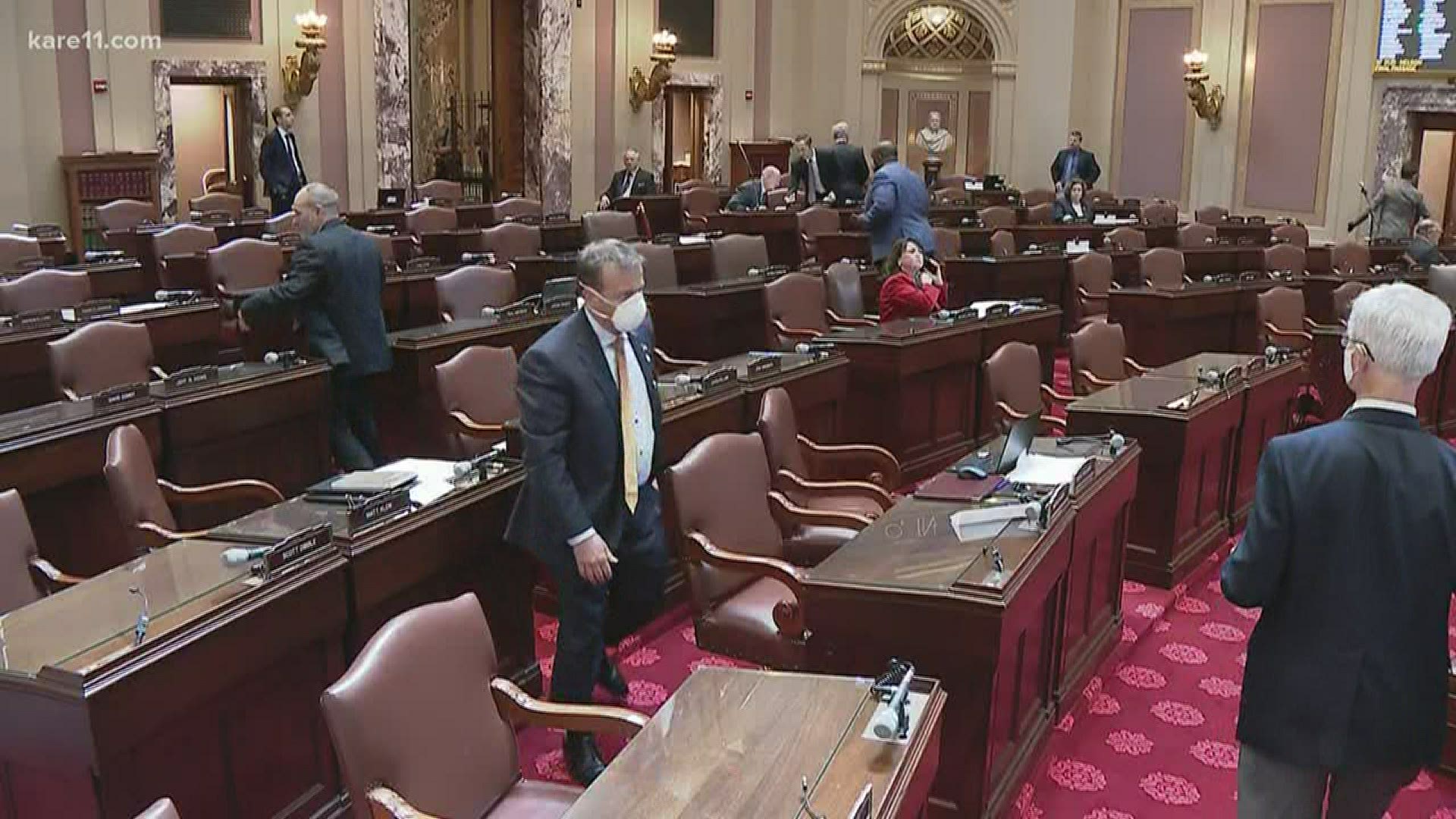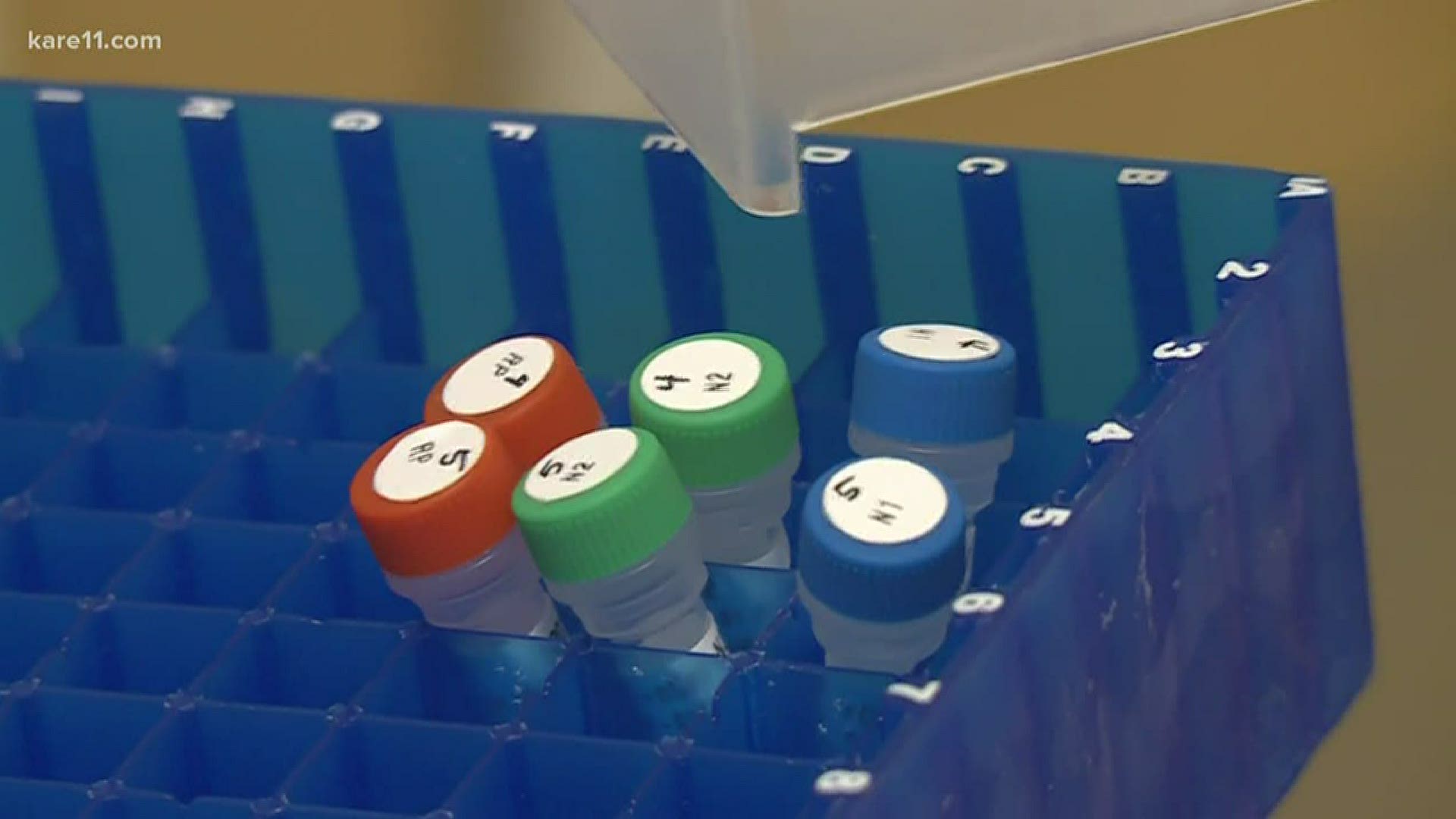Thursday, April 16
2 p.m.
President Donald Trump said Thursday that governors will call their "own shots" on when to reopen their states' economies.
Meanwhile, Minnesota Gov. Tim Walz has joined a coalition of seven Midwestern states that have pledged to use a "fact-based, data-driven approach" to opening back up.
A spokesperson for Walz clarified for KARE 11 that this does not necessarily mean those states' exact dates will align.
While Walz was tied up on his call with President Donald Trump and other U.S. governors, the Minnesota Department of Health (MDH) held its daily briefing to give reporters an update on the state's response to COVID-19.
MDH Commissioner Jan Malcolm responded to the news about the Midwest pact, saying it "underscores the fact that we know that this virus doesn't respect geopolitical borders very well."
Iowa, North Dakota and South Dakota are not included in the coalition, which consists of Minnesota, Wisconsin, Michigan, Illinois, Kentucky, Ohio and Indiana.
Malcolm said she does not know why those states are not included, but that Walz "is and will remain in frequent contact" with those three governors.
RELATED: Walz joins Midwestern governors pact
MDH Infectious Disease Director Kris Ehresmann said Minnesota is in a good place with its case investigation and contact tracing. They are looking at what they would need to do to scale that up if necessary, considering the governor's ambition to test more widely in Minnesota.
Earlier Thursday, the University of Minnesota announced that they are ready to test 10,000 people per day for both current COVID-19 infection and antibodies for the virus. They are requesting $20 million from the state legislature to fund the proposal.
These numbers would put Minnesota even further ahead of where Walz said testing capacity would need to be to begin reopening the economy.
MDH Commissioner Malcolm said she has not seen the details of the proposal, but that she knew that it was in the works. MDH is looking for the best statewide strategy, she said, to take advantage of the testing capacity of various health care providers.
"We need to focus on symptomatic folks, as you know we've had a priority list for some time that we've been unable to reach all the priority groups, so we welcome the rapid expansion of testing," Malcolm said.
Malcolm said she couldn't comment on the specifics of the U of M's financial request.
"There's the cost of creating the testing platform and then the cost of running the tests," she said. "There's a fairly complicated web of billing issues to work through about who's paying for tests. The health plans in Minnesota have agreed to waive patient co-payments for that, the federal government is saying they're gonna increase Medicare reimbursement rates for tests. So there are just a lot of moving parts and pieces here that I'm sure the legislature will want to think through as well in terms of funding requests."
Malcolm said in terms of who they're testing now, they're still working to satisfy the demand for current priority groups before they can expand those categories. Right now they're prioritizing health care workers, hospitalized patients, those in congregate care, first responders and some critical workers such as those in child care.
MDH continues to urge caution in assuming Minnesota is out of the woods when it comes to COVID-19.
"We are happy about the fact that we've got lower numbers of cases in Minnesota and lower numbers of deaths, though every one is a sadness," Malcolm said. But she added, "We don't know what might happen next."
Malcolm said they are keeping a close eye on whether the growth rate is increasing, and watching places that are at higher risk for becoming "hot spots."
"We don't want to assume that just because we've got a pretty measured rate of growth right now, that that's going to continue," she said.
In light of Severe Weather Awareness Week, Malcolm said that they have decided to keep storm shelters open during the pandemic. They are still urging people who need to use them to practice social distancing, cough into their sleeve, and wear a cloth face mask if possible.
11 a.m.
With big news about the possibility of a dramatic increase in testing capability looming on the horizon, The Minnesota Department of Health (MDH) on Thursday reported 7 new deaths attributed to complications from COVID-19. That brings the total number of lives lost in the pandemic to 94.
MDH says the number of Minnesotans testing positive for coronavirus is now up to 1,912, an increase of 103 cases from the 1,809 reported Wednesday. Health officials say 213 patients are hospitalized with the virus as of Thursday, with 103 of them requiring care in the ICU. Since MDH began compiling numbers in late January, a total of 475 people have been treated in Minnesota hospitals.
The number of people who have been diagnosed with COVID-19 but have recovered enough to no longer require isolation is now at 1,020, more than half of the total who have tested positive.
Thursday, April 16
10:30 a.m.
The University of Minnesota is aiming to expand testing for both the COVID-19 virus and antibody resistance statewide.
University researchers invented a Polymerase Chain Reaction (PCR) test that identifies the COVID-19 virus in patients, and also a test that determines if the patient has antibodies in their blood.
The university is preparing to conduct around 10,000 PCR tests and 10,000 antibody tests per day across the state.
Wednesday, April 15
8:30 p.m.
According to a press release put out by the office of Gov. Walz and Lt. Gov. Peggy Flanagan, Minnesota received roughly $1 billion in coronavirus relief from the federal government on Wednesday, as part of the CARES Act.
The funds will serve to offset the economic toll the COVID-19 pandemic is having on the state.
The governor said, “the state is providing critical funding to hospitals, public health departments, and first responders as we work together to keep Minnesotans safe amid the COVID-19 pandemic. This critical federal funding will help support Minnesota’s state and local governments as we continue our efforts to combat the spread of the virus in Minnesota.”
The release says the state is expected to receive a total of $2.187 billion in coronavirus relief through the federal Coronavirus Relief Fund, with some of that funding going to "local units of government."
Minnesota Management and Budget Commissioner Myron Frans said, “This is an important first step from the federal government as Minnesota responds to COVID-19 in a fiscally responsible manner.”
Minnesota can expect to see the remaining balance of payments allocated to the state by no later than April 24, 2020, according to the release.
5:30 p.m.
The Office of Governor Tim Walz and Lt. Governor Peggy Flanagan announced the signing of a new COVID-19 relief package aimed at expanding COVID-19-related healthcare coverage for both insured and uninsured Minnesotans.
The governor's office says the package enables those with Medicaid and MinnesotaCare to receive care at temporary sites once they are set up.
The legislation grants full eligibility for uninsured Minnesotans to be covered for COVID-19 testing, and a 100% federal reimbursement will be offered for the associated clinic visit.
Describing the bipartisan effort, Governor Walz said, “Our team partnered with legislators on both sides of the aisle in putting together this legislation to help Minnesotans weather COVID-19. We will continue working with our local, state, and federal partners to ensure Minnesotans have the support they need during this pandemic.”
According to the press release, The bill (HF 4556) represents the fourth legislative relief package passed and signed in the month of April.
“This legislation will help Minnesotans with and without insurance afford COVID-19 testing and care, streamline telemedicine, and extend administrative deadlines to provide Minnesotans with more flexibility,” said Flanagan.
2 p.m.
Minnesota Gov. Tim Walz continues to emphasize a "ramping up" of testing as the best way to get people back to work amid the COVID-19 pandemic.
Walz maintained on his daily COVID-19 update call Wednesday that Minnesota will need to be testing at a rate of 5,000 per day, or 35,000 to 40,000 per week, before the state can safely "reopen" in a more substantial way.
Both the Mayo Clinic and the University of Minnesota have said that they are able to help with this tall order, as they are testing in the thousands already and plan to expand. But their capacity is being used nationally, and will need to increase even further to provide that level of testing to Minnesota specifically.
"I believe Minnesota can be the one example of where this can work," Walz said. "I am going to push my team, I am going to push these researchers, I am going to push Mayo Clinic to lean into this."
There are still questions about the accuracy of serology tests, which measure antibodies to show whether a person has already had COVID-19. Walz said that these types of blood tests will be one of the main avenues to figuring out who may be able to go back to work and who may have some immunity.
He and Minnesota Department of Health (MDH) Infectious Disease Director Kris Ehresmann acknowledged that the science in this area is new, and they don't know for certain that someone who has had the coronavirus previously would have immunity, or how long that immunity would last.
Walz said some of the tests on the market are "just plain worthless." But there is a "good probability that there will be some immunity," he said, and Minnesota will utilize the more reliable tests including those from Mayo Clinic and the U of M.
"This is not the panacea, this is not the easy fix," he said, but "it is promising."
Although testing capabilities by Mayo and the U of M are increasing, MDH Commissioner Jan Malcolm said there are still challenges on the collection end where providers take samples for tests. The issues are related to availability of personal protective equipment (PPE) for those health care workers, and staff capacity to take those samples.
The benefit to serology tests, though, is that they are blood tests that do not require swabs, which are in very short supply globally. Ehresmann said Minnesota is in "a much better place" with serology test capability for that reason.
Walz said that in terms of Minnesota's supply of PPE, he is "feeling more confident" than he was a week ago.
"I think there's reasons to think that we are building toward the capacity that we need," He said. "But there's still an unknown."
“We cannot lose all that we’ve gained," Walz said. "We have put this state in a position where we’re saving lives and we can do it as well as anybody, and we want to prove that.”
Malcolm said Wednesday that MDH is comfortable enough with its diagnostic testing capacity that they can begin to test more people beyond health care workers, hospitalized patients and people in congregate care. They've added police and other first responders to the priority list already.
"We've had to restrict the list more than we would have wanted at many points and we're now at the place where we are, we believe it's important to and we're able to, because of this added capacity that we've talked about coming online just recently, we're able to expand that priority list now," Malcolm said.
Ehresmann said they also want to expand serology testing to health care workers and essential workers, along with people at the highest risk for severe illness from COVID-19.


